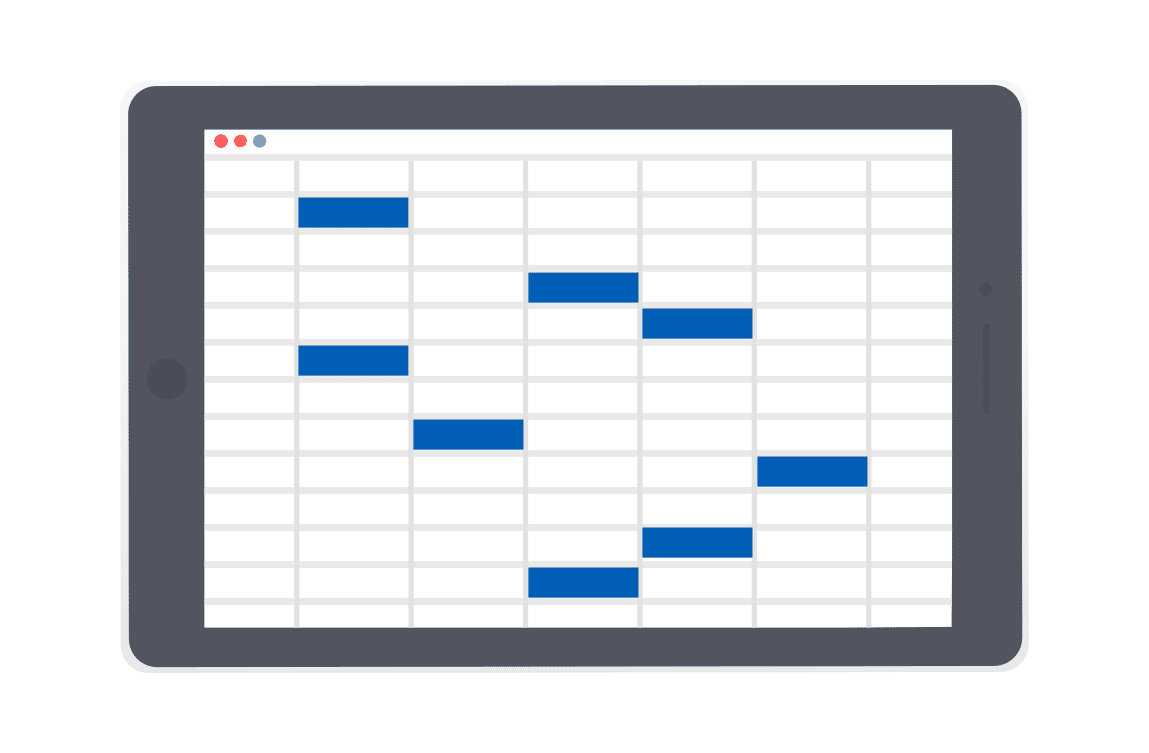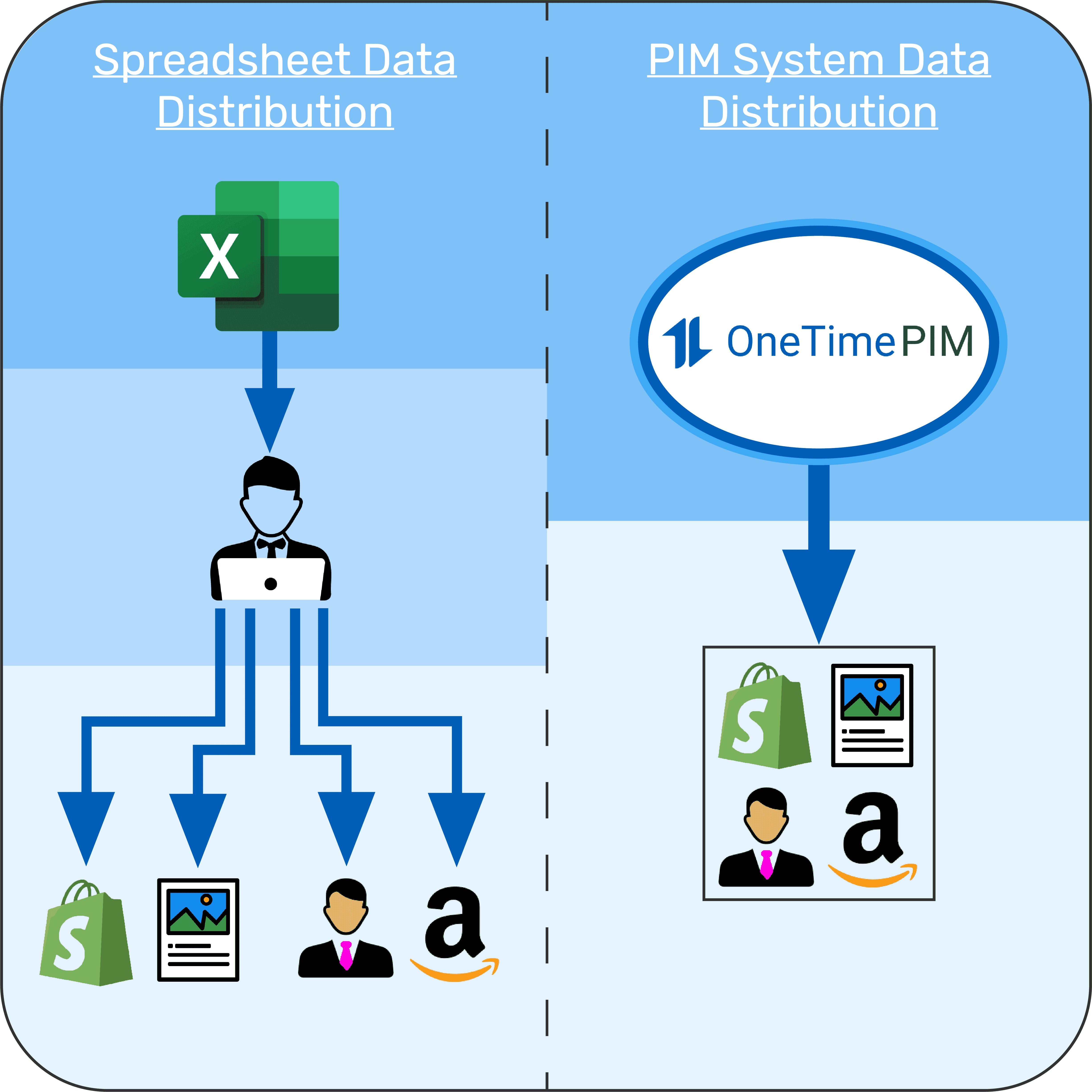
Spreadsheets have long been a popular method for managing various forms of data, and it's no surprise. They are powerful and flexible tools that have been around since 1987. However, when it comes to managing product data, the past few years have seen the rise of PIM systems. These specialized tools are designed specifically for managing that type of information and have exposed some inefficiencies in using spreadsheets for this purpose.
In this article, we will take a closer look at four key disadvantages of using spreadsheets to manage product information. By understanding these disadvantages, you can make an informed decision about whether a PIM system is the right choice for your business.
1. Can't store images
One significant disadvantage of using spreadsheets to manage product information is the inability to store and view images of an item alongside its data. In the eCommerce world of today, photos are just as important as the information itself, if not more so. People are visual creatures, and studies have shown that we remember 80% of what we see, but only 20% of what we read.
In a product information spreadsheet, it is inefficient and cumbersome to have links to images or file names. The photos cannot be viewed alongside the data, which can increase the likelihood of errors and make it more time-consuming to check for missing images. This can lead to lower-quality images on sales marketplaces, which can negatively impact conversion rates.
OneTimePIM's fully integrated digital asset management system simplifies this process by allowing users to upload images and store them alongside the product data. This makes it much easier for data managers to view the data and images together, quickly spotting any mistakes or missing images.
2. Doesn't prevent errors from being entered
While spreadsheets are a well-established and excellent tool for storing large amounts of data, they lack any functionality to reduce errors. The software will accept any data added to a cell without issue, which can lead to errors in product data.
When managing vast lists of products, it is inevitable that errors will occur. With spreadsheets containing thousands of products, it becomes almost impossible to spot every mistake. This is a significant weakness because incorrect data could be published on an eCommerce page or website for months, potentially damaging the company's reputation and losing sales.
In contrast, PIM systems have numerous tools designed to prevent errors. For example, they will only allow valid data to be entered in a column, such as a numerical value in the price column. They also ensure that metric columns use the same unit of measurement for a product range, reducing confusion and potential errors. These small but important features result in a dramatic increase in the quality of product information, ultimately boosting sales and enhancing the customer experience.
3. Isn't accessible to the rest of the company
One significant disadvantage of using spreadsheets to manage product information is that it can be challenging for other employees to access the data. When staff work on individual spreadsheets, other team members may not be able to access the most recent version of the data, which can lead to confusion and errors. This is especially challenging for larger companies where several departments need access to the same data.
In contrast, PIM systems provide a centralized location for product data that is accessible to everyone in the organization. With data stored in a single cloud-based system, it is always up-to-date and in sync. This enhances collaboration and communication among team members, improving overall productivity and ensuring that everyone has access to the most recent product information.
4. Distributing information is time-consuming
Managing product information is only part of the story. For product information to be valuable, it needs to be easily accessible to potential customers and sales marketplaces. Unfortunately, spreadsheets are not designed for this purpose, making it difficult to share product information with others.
Spreadsheets lack the necessary tools to generate and distribute high-quality, standardized product feeds to various channels, such as eCommerce platforms or marketplaces. This can lead to errors in data transmission and formatting, which can damage a company's reputation and negatively impact sales.
In contrast, PIM systems are designed to generate and distribute standardized product feeds to multiple channels quickly and easily. PIM systems can also automatically update product information across all channels, ensuring consistency and accuracy.

Using spreadsheets to manage product information can be very time-consuming, particularly when it comes to distributing data across different sales marketplaces. Each marketplace has different criteria for data, including character limits and attribute names. Spreadsheets may need to be duplicated and manually adjusted to fit the specific needs of each marketplace, making the process very messy and time-consuming.
PIM systems, on the other hand, are specifically designed to manage and distribute product data efficiently. PIM systems offer complete flexibility when it comes to exporting data to sales marketplaces. In addition, PIM systems can automate the process of sending data to different channels, saving a significant amount of time and effort.
In summary, spreadsheets have many disadvantages when it comes to managing product information. Specialist PIM software is designed specifically for product information management and can significantly enhance a business's productivity. At OneTimePIM, we offer a range of PIM solutions to help businesses of all sizes manage and distribute their product data more efficiently. Contact us to learn more or book a free demo to see our PIM system in action.
